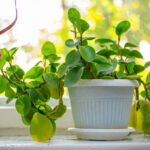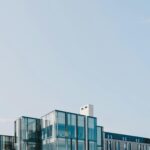When it comes to gardening, there’s no shortage of old wives’ tales and household remedies that claim to make your plants thrive. One of the most enduring is the use of Epsom salt. For decades, gardeners have sprinkled, soaked, or sprayed this crystalline substance on their gardens, swearing by its ability to boost blooms, improve growth, and banish pests. But does Epsom salt really live up to the hype, or is it simply a gardening myth that has gained traction through word of mouth?
Before you next consider adding Epsom salts for plants to your garden routine, it’s worth exploring what science says, how it works, and whether it truly benefits your plants.
What is Epsom Salt?
Despite its name, Epsom salt isn’t the kind of salt you’d use on your dinner. Chemically known as magnesium sulphate, it’s a naturally occurring mineral compound made up of magnesium, sulphur, and oxygen. It was first discovered in the town of Epsom in England, where the mineral-rich spring water was historically used for healing and soaking purposes.
For gardening, the appeal lies in its magnesium content. Magnesium is an essential nutrient for plants because it plays a key role in photosynthesis, helping plants convert sunlight into energy. Sulphur, the other key component, contributes to protein and enzyme development. Both nutrients are important, but the question is: do most gardens actually need more of them?
The Claims: Why Gardeners Use Epsom Salt
Gardeners who swear by Epsom salt suggest it can:
- Increase flower and fruit production
- Enhance leaf greenness by boosting chlorophyll levels
- Improve overall plant health and growth
- Help deter pests like slugs and beetles
- Correct nutrient deficiencies in soil
The Science: Does It Hold Up?
Here’s where the story becomes less straightforward – while magnesium is indeed essential for plant health, not all soils are deficient in it. In fact, many Australian soils already contain adequate magnesium, meaning additional supplementation may not yield any visible benefit.
Research by agricultural and horticultural experts has shown mixed results:
– Positive outcomes in specific cases: In soils low in magnesium, Epsom salt can help correct deficiencies. This may lead to greener leaves and healthier growth, especially in magnesium-hungry plants like tomatoes and roses.
– Limited impact in magnesium-rich soils: If your soil already contains enough magnesium, adding more won’t improve plant health. In some cases, it can even throw off the balance of nutrients, potentially interfering with the uptake of calcium or potassium.
– Lack of broad scientific endorsement: Unlike fertilisers that provide nitrogen, phosphorus, and potassium—the “big three” nutrients most plants require—Epsom salt is not considered a complete fertiliser. Its role is supplementary, not primary.
In short, the effectiveness of Epsom salt depends largely on your soil’s condition and your plants’ specific needs.
Benefits of Using Epsom Salt in the Garden
Correcting Magnesium Deficiency
Magnesium deficiencies often show up as yellowing leaves, particularly between the veins, while the rest of the leaf remains green. A lack of magnesium can also lead to poor fruit set and reduced yield. Applying Epsom salt can quickly supply plants with the magnesium they need to recover.
Supporting Roses and Tomatoes
Both roses and tomatoes are commonly cited as benefiting from Epsom salt treatments. For roses, Epsom salt may encourage strong root development and vibrant blooms. For tomatoes, it can help with nutrient balance, especially if your soil is prone to magnesium deficiency.
Easy and Inexpensive Supplement
Compared to many specialist fertilisers, Epsom salt is relatively cheap and readily available. If a deficiency is the issue, it’s a straightforward way to give plants a targeted nutrient boost without breaking the bank.
Risks and Limitations
Like any supplement, overuse of Epsom salt comes with risks. Applying too much magnesium sulphate can create imbalances in the soil, reducing the uptake of calcium and potassium—two nutrients just as vital for plant growth. This imbalance may lead to blossom-end rot in tomatoes or weakened overall plant health.
On top of this, relying on Epsom salt as your primary fertiliser is not advisable. While it provides magnesium and sulphur, it doesn’t contain nitrogen, phosphorus, or potassium. A balanced fertiliser is still essential for sustained plant growth and productivity.
Best Practices for Using Epsom Salt
Test Your Soil First
Before adding anything to your garden, it’s always best to conduct a soil test – this will tell you whether your soil is actually deficient in magnesium or sulphur. Without a test, you’re essentially guessing, which could cause more harm than good.
Use Moderation
Less is more when it comes to supplements. Start small and monitor your plants’ response before committing to regular applications.
Application Methods
Soil Drench: Dissolve about one tablespoon of Epsom salt in 4 litres of water and apply directly to the soil around the plant’s base.
Foliar Spray: Mix one tablespoon per 4 litres of water, then spray directly on the leaves for a quick magnesium boost.
Dry Application: Sprinkle sparingly around the base of plants and water in well.
Target the Right Plants
Focus on crops and ornamentals that are known to benefit from magnesium, such as tomatoes, peppers, roses, and some houseplants.
So, Myth or Miracle?
The truth about Epsom salt in gardening lies somewhere in between. It’s not a miracle cure that will transform every plant, nor is it a useless myth with no merit. Instead, it’s a helpful tool in specific circumstances—particularly where magnesium deficiency is an issue. For gardeners willing to experiment cautiously, Epsom salt can indeed improve certain plants’ performance. However, it should be seen as a supplement, not a substitute for comprehensive soil care and balanced fertilisation.
If you’re curious, start small, observe the results, and remember that healthy soil, regular watering, and good gardening practices are far more important than any quick fix. When used wisely, Epsom salt can be part of a gardener’s toolkit, but it’s no substitute for a balanced approach to plant care.






